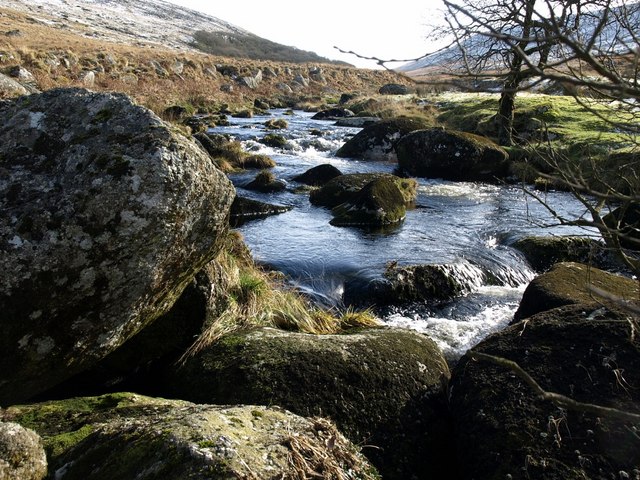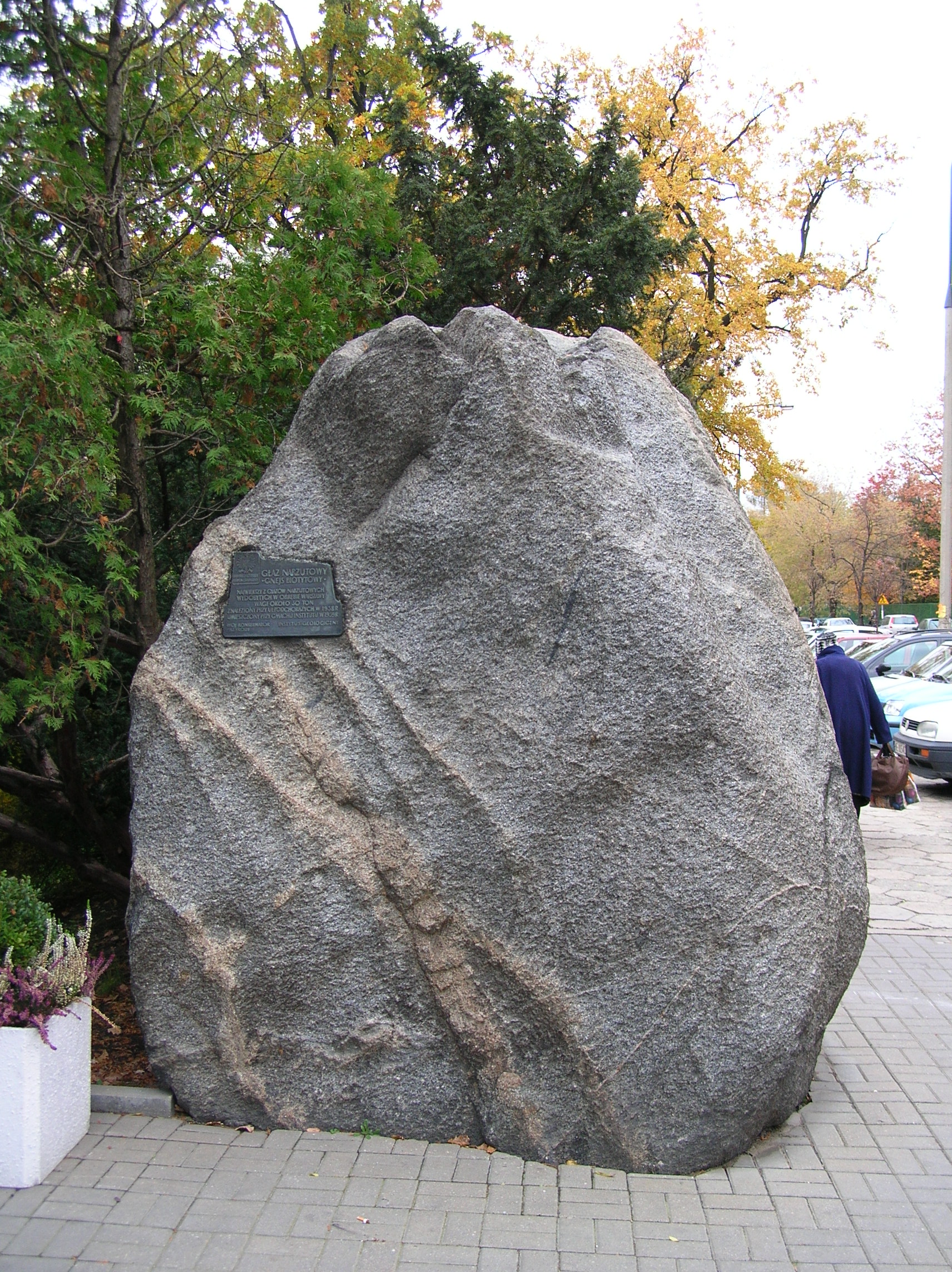|
Meldon, Devon
Meldon is a hamlet in West Devon, on the edge of Dartmoor in Devon, England. It is 4 km south-west of Okehampton. Its main features are the Meldon Quarry and Meldon Reservoir and the nearby Meldon Viaduct. Quarries Granite is still extracted from Meldon Quarry. The now disused Meldon Aplite Quarry has been designated as a Site of Special Scientific Interest because of its exposures of aplite and other rocks. The Dartmoor Railway terminates at Meldon Quarry; the former continuation of the line to Tavistock and Plymouth continues as a cycle path. The former railway line crosses the West Okement River on the Meldon Viaduct just before reaching the quarry from the west. Reservoir The reservoir was formed by damming the West Okement River. It is about 1.2 km long and 300 metres wide, and extends from the West Okement valley into a small side valley. Firing range Immediately to the south-east is the area of the Okehampton military firing range, which is sometimes closed t ... [...More Info...] [...Related Items...] OR: [Wikipedia] [Google] [Baidu] |
Meldon Viaduct
Meldon Viaduct carried the London & South Western Railway (LSWR) across the West Okement River at Meldon (near Okehampton) on Dartmoor in Devon, South West England. The truss bridge, which was constructed from wrought iron and cast iron not stone or brick arches, was built under the direction of the LSWR's chief engineer, WR Galbraith. After taking three years to build, the dual-tracked bridge opened to rail traffic in 1874. Usage was limited to certain classes of locomotive because the viaduct had an axle load limit. Although regular services were withdrawn in 1968, the bridge was used for shunting by a local quarry. In the 1990s the remaining single line was removed after the viaduct was deemed to be too weak to carry rail traffic. The crossing is now used by The Granite Way, a long-distance cycle track across Dartmoor. The viaduct, which is a scheduled monument, is now one of only two such surviving railway bridges in the United Kingdom that uses wrought iron lattice piers ... [...More Info...] [...Related Items...] OR: [Wikipedia] [Google] [Baidu] |
Granite
Granite () is a coarse-grained (phaneritic) intrusive igneous rock composed mostly of quartz, alkali feldspar, and plagioclase. It forms from magma with a high content of silica and alkali metal oxides that slowly cools and solidifies underground. It is common in the continental crust of Earth, where it is found in igneous intrusions. These range in size from dikes only a few centimeters across to batholiths exposed over hundreds of square kilometers. Granite is typical of a larger family of ''granitic rocks'', or ''granitoids'', that are composed mostly of coarse-grained quartz and feldspars in varying proportions. These rocks are classified by the relative percentages of quartz, alkali feldspar, and plagioclase (the QAPF classification), with true granite representing granitic rocks rich in quartz and alkali feldspar. Most granitic rocks also contain mica or amphibole minerals, though a few (known as leucogranites) contain almost no dark minerals. Granite is nearly alway ... [...More Info...] [...Related Items...] OR: [Wikipedia] [Google] [Baidu] |
Rail Trail
A rail trail is a shared-use path on railway right of way. Rail trails are typically constructed after a railway has been abandoned and the track has been removed, but may also share the right of way with active railways, light rail, or streetcars (rails with trails), or with disused track. As shared-use paths, rail trails are primarily for non-motorized traffic including pedestrians, bicycles, horseback riders, skaters, and cross-country skiers, although snowmobiles and ATVs may be allowed. The characteristics of abandoned railways—gentle grades, well-engineered rights of way and structures (bridges and tunnels), and passage through historical areas—lend themselves to rail trails and account for their popularity. Many rail trails are long-distance trails, while some shorter rail trails are known as greenways or linear parks. Rail trails around the world Americas Bermuda The Bermuda Railway ceased to operate as such when the only carrier to exist in Bermuda folded in 1948. ... [...More Info...] [...Related Items...] OR: [Wikipedia] [Google] [Baidu] |
Civil Parish
In England, a civil parish is a type of administrative parish used for local government. It is a territorial designation which is the lowest tier of local government below districts and counties, or their combined form, the unitary authority. Civil parishes can trace their origin to the ancient system of ecclesiastical parishes, which historically played a role in both secular and religious administration. Civil and religious parishes were formally differentiated in the 19th century and are now entirely separate. Civil parishes in their modern form came into being through the Local Government Act 1894, which established elected parish councils to take on the secular functions of the parish vestry. A civil parish can range in size from a sparsely populated rural area with fewer than a hundred inhabitants, to a large town with a population in the tens of thousands. This scope is similar to that of municipalities in Continental Europe, such as the communes of France. However, ... [...More Info...] [...Related Items...] OR: [Wikipedia] [Google] [Baidu] |
West Okement River
The West Okement is a river in north Dartmoor in Devon in south-west England. It rises at West Okement Head near Cranmere Pool and flows in a generally NW direction past Black-a-Tor Copse and into Meldon Reservoir. After exiting the reservoir it flows in a generally northeast direction towards Okehampton, where it joins the East Okement River to form the River Okement The River Okement is a tributary of the River Torridge in Devon, England. It used to be known as the River Ock. It rises at two places in Dartmoor, as the West Okement and the East Okement. These meet with other minor streams and join togethe .... Its total length is roughly . Okement Okement 2WestOkement {{England-river-stub ... [...More Info...] [...Related Items...] OR: [Wikipedia] [Google] [Baidu] |
Tavistock, Devon
Tavistock ( ) is an ancient stannary and market town within West Devon, England. It is situated on the River Tavy from which its name derives. At the 2011 census the three electoral wards (North, South and South West) had a population of 13,028. It traces its recorded history back to at least 961 when Tavistock Abbey, whose ruins lie in the centre of the town, was founded. Its most famous son is Sir Francis Drake. History Middle Ages The area around Tavistock (formerly Tavistoke), where the River Tavy runs wide and shallow allowing it to be easily crossed, and near the secure high ground of Dartmoor, was inhabited long before historical records. The surrounding area is littered with archaeological remains from the Bronze and Iron Ages and it is believed a hamlet existed on the site of the present town long before the town's official history began, with the founding of the Abbey. The abbey of Saint Mary and Saint Rumon was founded in 961 by Ordgar, Earl of Devon. After destruct ... [...More Info...] [...Related Items...] OR: [Wikipedia] [Google] [Baidu] |
Dartmoor Railway
The Dartmoor line is a railway line in Devon, England. From , the line runs alongside the Tarka Line to the site of the former Coleford Junction where it diverges west to . Previously a heritage line, it is owned by Network Rail. The route was originally part of the London and South Western Railway's route from Exeter to Plymouth, which was opened between 1865 and 1879. In 1968, British Rail closed the line beyond Meldon (two miles beyond Okehampton) as part of the Beeching cuts. The Exeter to Okehampton passenger service was withdrawn by British Rail in 1972. The line itself remained open for freight services from the railway ballast quarry at Meldon. From 1997 to 2019, the line was operated as a heritage railway by the Dartmoor Railway community interest company. During this time, Great Western Railway ran a public service between Exeter and Okehampton on summer Sundays. Meldon quarry was mothballed in 2011, ceasing the use of the line for freight. In July 2021, as part ... [...More Info...] [...Related Items...] OR: [Wikipedia] [Google] [Baidu] |
Aplite
Aplite () is an intrusive igneous rock in which the mineral composition is the same as granite, but in which the grains are much finer, under 1 mm across. Quartz and feldspar are the dominant minerals. The term ''aplite'' or ''aplitic'' is often used as a textural term to describe veins of quartz and feldspar with a fine to medium-grain "sugary" texture. Aplites are usually very fine-grained, white, grey or pinkish, and their constituents are visible only with the help of a magnifying lens. Dykes and veins of aplite are commonly observed traversing granitic bodies; they occur also, though less frequently, in syenites, diorites, quartz diabases, and gabbros. Aplites usually have a genetic affinity to the rocks they intrude. The aplites of granite areas, for example, are the last part of the magma to crystallize, and correspond in composition to the quartzo-feldspathic aggregates that fill up the spaces between the early-formed minerals in the main body of the rock. They ... [...More Info...] [...Related Items...] OR: [Wikipedia] [Google] [Baidu] |
Site Of Special Scientific Interest
A Site of Special Scientific Interest (SSSI) in Great Britain or an Area of Special Scientific Interest (ASSI) in the Isle of Man and Northern Ireland is a conservation designation denoting a protected area in the United Kingdom and Isle of Man. SSSI/ASSIs are the basic building block of site-based nature conservation legislation and most other legal nature/geological conservation designations in the United Kingdom are based upon them, including national nature reserves, Ramsar sites, Special Protection Areas, and Special Areas of Conservation. The acronym "SSSI" is often pronounced "triple-S I". Selection and conservation Sites notified for their biological interest are known as Biological SSSIs (or ASSIs), and those notified for geological or physiographic interest are Geological SSSIs (or ASSIs). Sites may be divided into management units, with some areas including units that are noted for both biological and geological interest. Biological Biological SSSI/ASSIs may ... [...More Info...] [...Related Items...] OR: [Wikipedia] [Google] [Baidu] |
Dartmoor Reservoirs
Over the course of the 19th and 20th centuries, several reservoirs and dams were built in the area now covered by Dartmoor National Park in Devon, England to supply drinking water to the rapidly growing towns in the surrounding lowlands. With its deep valleys and high rainfall, Dartmoor was an inevitable location. New reservoirs continued construction even after the establishment of the National Park in 1951. Early schemes to use the moors as a source of drinking water involved the construction of water channels called leats. For example, Drake's Leat (completed 1591) took water to Plymouth and the Devonport Leat (1793) to the docks at Devonport. Rapid population growth of the seaside communities in the late 19th century and the birth of tourism required a significant improvement in quality and quantity of fresh water. The first Dartmoor reservoir (Tottiford) opened in 1861 and heralded a busy era of dam construction which continued through to 1907, by which time the Dartmoor are ... [...More Info...] [...Related Items...] OR: [Wikipedia] [Google] [Baidu] |
Okehampton Hamlets
Okehampton Hamlets is a civil parish in the Borough of West Devon and the English county of Devon, it runs independently from the Okehampton Town Council, meetings are held at the Meldon Village Hall. The Parish of Okehampton Hamlets is a rural parish situated in West Devon. It is made up of the hamlets of Brightley, Southcott, Meldon and Stockley. The parish occupies 15.48 square miles and it has an estimated population of 1,765. The hamlet of Southcott, which is predominantly agricultural with a number of small agricultural enterprises, having merged into one larger agricultural unit to secure the fragile agricultural community which has struggled in the past. The hamlet of Brightley lies north of Okehampton. The River Okement runs through the hamlet dividing Abbeyford Woods from the flat farmland. Farming is the main commercial activity due to the decline of forestry activity in Abbeyford Woods. The leat which once powered Brightley Mill can still be seen and just insid ... [...More Info...] [...Related Items...] OR: [Wikipedia] [Google] [Baidu] |
Meldon Quarry
Meldon Quarry is a granite quarry in Devon, England. It is at the northern edge of Dartmoor, about 2 miles SW of Okehampton. It was developed from 1897 to supply track ballast and other stone products for the London and South Western Railway (LSWR). It was privatised in 1994. Track ballast A small quarry was started to supply local railway requirements in 1874, concurrent with the opening of the LSWR's railway extension from Okehampton to Lydford, on which the quarry lies. The railway is described in Exeter to Plymouth railway of the LSWR The Exeter to Plymouth railway of the London and South Western Railway (LSWR) was the westernmost part of a route competing with that of the Great Western Railway (GWR) and its 'associated companies' from London and Exeter to Plymouth in Devon, .... The quarry was considerably developed in 1897 to provide the majority of the track ballast requirements of the LSWR, which at the time amounted to about 100,000 tons per annum. The geology is su ... [...More Info...] [...Related Items...] OR: [Wikipedia] [Google] [Baidu] |









